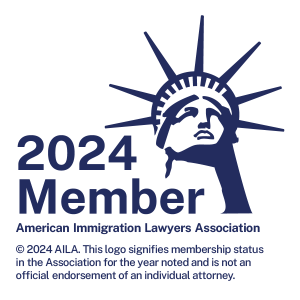The U.S. has a proud history and tradition of admitting refugees in US who have fled from their home country due to persecution based on religion, race, nationality, political opinion or membership in a particular social group. The U.S. refugee resettlement program has welcomed over 3 million refugees in US from all over the world and the program should not be shut-down or limited due to terror attacks; instead, the program should be utilized more by the U.S. to demonstrate our compassion, generosity and leadership.
On November 13, 2015, President Obama addressed the G-20 summit in Turkey and stated the United States would continue to accept more refugees from Syria and elsewhere, though “only after subjecting them to rigorous screening and security checks.” “Slamming the door in their faces would be a betrayal of our values,” he said. “Our nations can welcome refugees who are desperately seeking safety and ensure our own security. We can and must do both.”
How does the refugee resettlement program work?
The United Nations High Commissioner for Refugees (UNHCR), a U.S. Embassy, or an authorized non-governmental organization (NGO) can refer a refugee to the U.S. Refugee Admissions Program (USRAP). Once a referral is made, a Resettlement Support Center (RSC) funded and managed by Bureau of Population, Refugees, and Migration (PRM) prepares the case for presentation to the U.S. Department of Homeland Security (DHS).
The RSC helps the refugee and his /her family (if applicable) prepare their case file – taking photos, checking the facts in the files, collecting information for the security clearance process, etc. An officer of DHS’ United States Citizenship and Immigration Services (USCIS) then interviews applicants. The interviewer adjudicates the case. If approved, the applicant and his/her family undergo medical exams, which are standard for all applicants seeking to reside permanently in the United States. Refugees approved for admission are offered a short cultural orientation program to introduce them to life in the United States. Once all security and health checks are complete, refugees are scheduled for travel to the US.
History of the U.S. Refugee Program:
Following the admission of over 250,000 displaced Europeans in the wake of World War II, the first refugee legislation enacted by the U.S. Congress was the Displaced Persons Act of 1948. This legislation provided for the admission of an additional 400,000 displaced Europeans as refugee in US.
Later laws provided for admission of persons fleeing Communist regimes from Hungary, Poland, Yugoslavia, Korea and China, and Cuba. Most of these waves of refugees were assisted by private ethnic and religious organizations in the U.S., which formed the basis for the public/private role of U.S. refugee resettlement today.
In 1975 the U.S. resettled hundreds of thousands of Indochinese refugees through an ad hoc Refugee Task Force with temporary funding. This experience prompted Congress to pass the Refugee Act of 1980, which incorporated the United Nations definition of “refugee” and standardized the resettlement services for all refugees admitted to the U.S.
The Refugee Act provides the legal basis for today’s U.S. Refugee Admissions Program and is administered by the Bureau of Population, Refugees, and Migration (BPRM) of the Department of State in conjunction with the Office of Refugee Resettlement in the Department of Health and Human Services (HHS) and offices in the Department of Homeland Security (DHS).
Each year, the President of the United States, after consulting with Congress and the appropriate agencies, determines the designated nationalities and processing priorities for refugee resettlement for the upcoming year. The President also sets annual ceilings on the total number of refugees who may enter the U.S. from each region of the world.
In response to Republican criticism, President Obama stated on November 18, 2015, “We are not well served when, in response to a terrorist attack, we descend into fear and panic…We don’t make good decisions if it’s based on hysteria or an exaggeration of risks.” “Apparently they are scared of widows and orphans coming into the United States of America,” he said later. “At first, they were too scared of the press being too tough on them in the debates. Now they are scared of 3-year-old orphans. That doesn’t seem so tough to me.”













